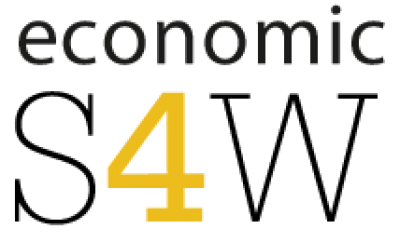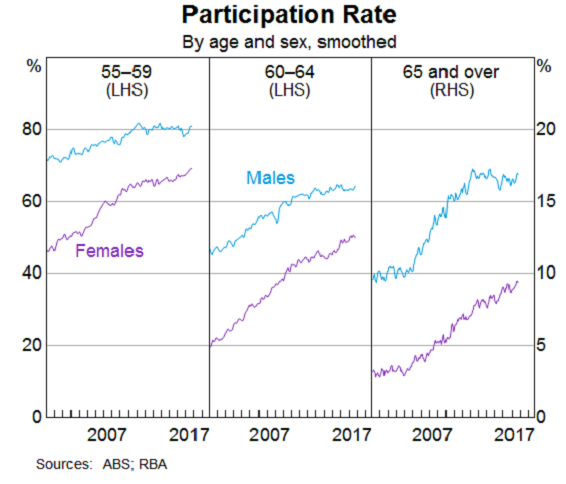White Paper on Policy recommendations to boost women’s economic security
eS4W’s White Paper on defining the concept of economic security for all women raises awareness and contribute effectively to development and implementation of policy that impacts all women living in Australia and ensures women’s equal place in society, in the Government’s policy priority area of improving women’s economic independence and financial security.
The current policy approach to childcare, superannuation, education, jobs and financial literacy is not keeping up with changes in social attitudes, structural changes in the economy and demographic changes.
The paper brings together research and analysis of specific issues that feed into the overarching issues of economic and financial security for women. We are grateful for the efforts, thoroughness and insightful nature of that work. This paper highlights some of the policy reforms that will be needed if women’s financial and economic security is to be enhanced.
It is a next step in the process that will inevitably be built upon as steps are taken to improve economic security for women.
Economic Security for Women
One of the well-established and central platforms of economic and social policy is to deliver economic and financial security for all members of society.
Economic security entails a number of basic conditions, but has as a central underpinning an ability, throughout life, to afford to have shelter, food and basic living expenses covered. Financial security also means opening access to opportunities not only at these basic levels of living standards, but to also achieve higher levels of security and well-being through education, training and employment opportunities.
Paid employment is one of the benchmarks for financial security, but in the circumstances where many women have either sporadic or minimal opportunities to engage in paid work throughout their adult life, a government provided, broadly based, financial safety net is essential if economic security for women is to be enhanced.
Why economic security for women?
Enhancing economic and financial security for women will not be achieved by undermining and lowering economic security for men. This is not about the tradeoff.
Rather, this important issue identifies areas where women’s economic security is lower or more precarious than for men, it uncovers reasons why this is likely to have occurred and canvasses policy and other issues that can be put in place to lift the economic status and financial well-being of women.
The case for women and issues of lower economic security than men
Australia is a high-income country, with most measures of lifestyle and well-being amongst the highest in the world. Continued economic growth and rising wealth have been the hallmarks of the economy over many decades.
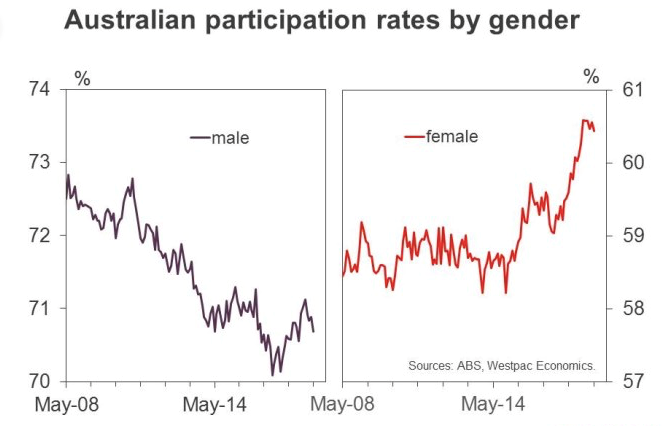
The composition of employment
A fundamental element of the gender pay gap is evident in the industries and occupations that have a high ratio of female employment and overwhelmingly have lower pay rates than industries where males dominate employment.
One element that emerges when examining why this is so and what to do about it, boils down to what are largely arbitrary long-run societal judgments about the value of work, including how this impacts on economic security for women.
In terms of the contribution to society, questions can be asked:
- is a carer of older people or those with disabilities more valuable than a school teacher?
- Is a school teacher more valuable than a mining engineer? or
- Is a mining engineer more valuable than someone working in a senior leadership role?
There are two main ways to address this imbalance
- Having more women employed in the industries and occupations where relative pay rates are high and above average.
- Increasing the pay rates, through arbitration and awards, in sectors that are have a higher ratio of women engaged.Implementing a strategy where over the medium term, say 10 years, wages in teaching, nursing, aged care, child care and health increase faster than in other occupations would ‘revalue’ the financial rewards to those working in these sectors and would work to close the gender pay gap. If implemented, the structural increase in wages would remain proportional to the skill level of each sector.
What you can do
Lobby to introduce legislation that ensures all employees continue to provide superannuation guarantee contributions to staff while on maternity and paternity leave. In your lobbying, link to this page.
Gender participation by occupation
Occupations that have a high concentration of women in the workforce tend to have lower incomes. The ‘carer’ occupations including health and social assistance and education and training are generally dominated by full time equivalent wages in the middle to lower quartiles. Women also make up around 56 per cent of those employed in retail trade and accommodation and food services, which also are generally low wage sectors.
If wage levels in these sectors increase at a pace above the average, progress would be made in reducing the gender pay gap.
Superannuation and the pension
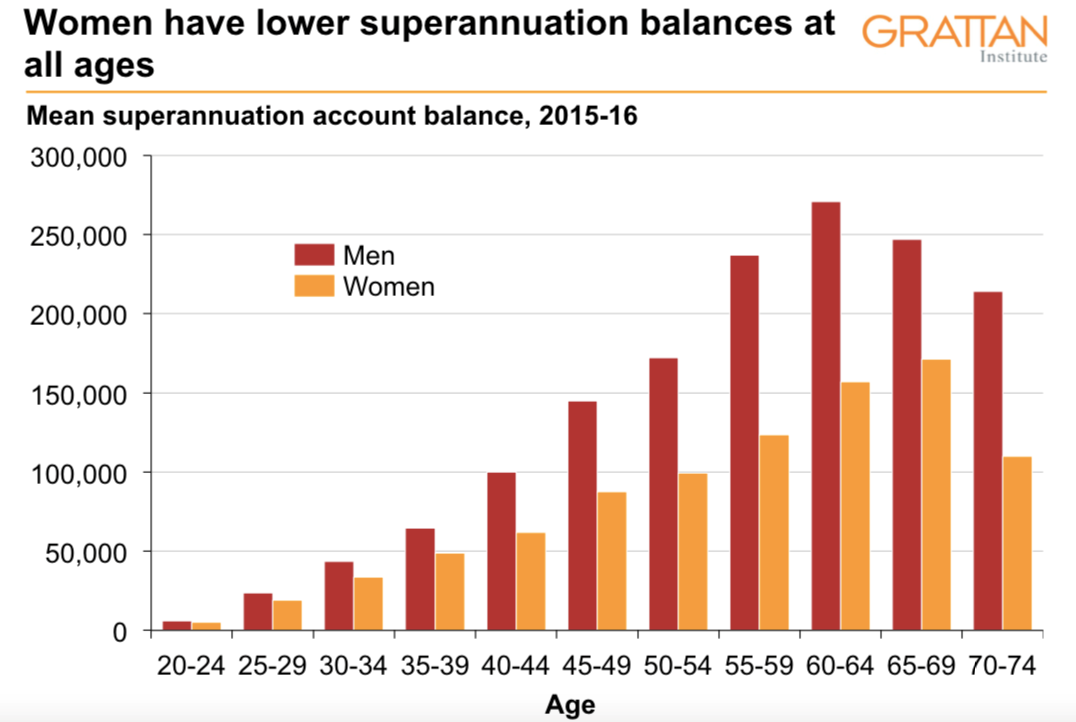
Awareness of superannuation savings – financial awareness and education
What you can do
Lobby to close gender pay gap through legislated wage increases skewed towards currently low paid sectors that have a high proportion of female workers. In your lobbying, link to this page.
Knowledge – It is not just financial education and literacy, although that is important
Prevalence of greater financial abuse impacting women
Financial ‘abuse’ is an emotive but very real term, but it has been identified as an issue which predominantly impacts women.
They are sometimes subtle and not an obvious infringement of economic security but are behaviours that clearly undermine financial well-being and flexibility.
Working longer as the population ages
With life expectancy increasing and quality of life also being enhanced for older Australians, the workforce participation rate of those aged 55 years and older is increasing. The increase is especially evident for women.
Childcare
The parental pay gap?
Progress in education
The pay gaps undermine women’s economic security for reasons noted earlier.
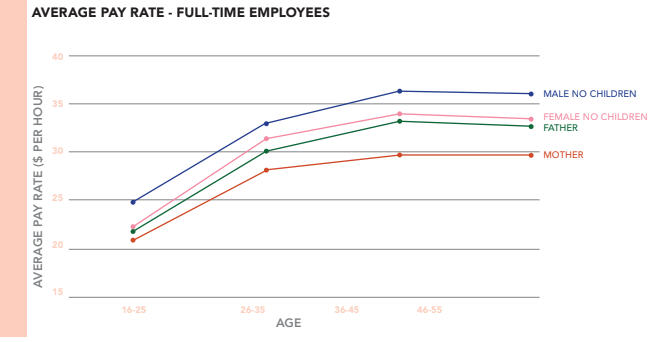
Source: CEDA
Migrant women and economic security
Australian women of culturally and linguistically diverse backgrounds face a range of specific challenges which often impact negatively on their economic and financial security. These challenges are over and above the other issues women in Australia face in terms of economic security.
Indigenous women
According to the National Aboriginal & Torres Strait Islander Women’s Alliance (NATSIWA),
Conclusion and recommendations
The recommendations in this report are deliberately broad. As the report indicates, some moderate progress has been made in addressing shortfalls in the economic and financial security for women and there are issues currently in the policy mix which if implemented, will help further improve women’s economic security. That said, there are some clear and high impact policy changes that are essential if the economic security of women is to improve over the medium term.
It is important to note that there are no quick fixes. Many recommendations are made with the full awareness of the time needed to allow the policy changes to have their impact. That said, the policy changes should be implemented as soon as practical to ensure the early steps in addressing economic security for women commences.
